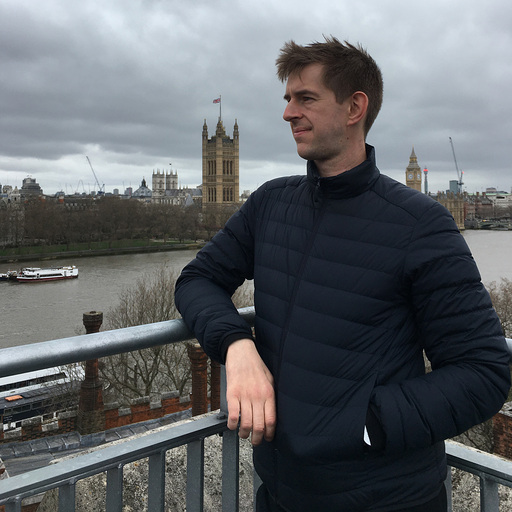The Secret Architecture of America’s $1BN Fortress
- Youtube Views 2,248,869 VIDEO VIEWS
Video hosted by Fred Mills. This video and article contain paid promotion for Masterworks.
HOW CAN a building represent a country? An embassy is more than just a bricks and mortar, it’s a symbol of a country abroad, proud, grand, sophisticated. It should show all the airs and graces of a nation presenting itself on the world stage.
The US embassy in London is not just a home away from home, it’s the embodiment of a special diplomatic relationship and the seat of one of the most coveted ambassadorial positions in the world.
When it opened in 2018, this was not only the largest embassy in the UK, but also one of the most technologically advanced buildings in the world. The new HQ is an array of hi-tech security features blended seamlessly into a USD $1BN, 21st century fortress modelled on the castles of mediaeval Europe.
But the story of its construction is anything but diplomatic. To build this marvel, the US gave up what was seen as the best placed embassy in London and a location whose history dates back almost to the founding of the republic. And they traded it for a post industrial wasteland that most cab drivers would refuse to drive to. This is the untold story of the USA’s most advanced and most controversial embassy.
You might know Mayfair as the most expensive square on a London Monopoly board and it’s at Grosvenor Square, in the heart of the exclusive neighbourhood, that the US has had a toehold for centuries. So much so, it’s earned the nickname “Little America”.
It all started in 1785 when John Adams moved into this house on the corner and became the US’ first ambassador to Britain. Since then it’s hosted two former embassies and during World War II housed the European HQ of the US Army and Navy.
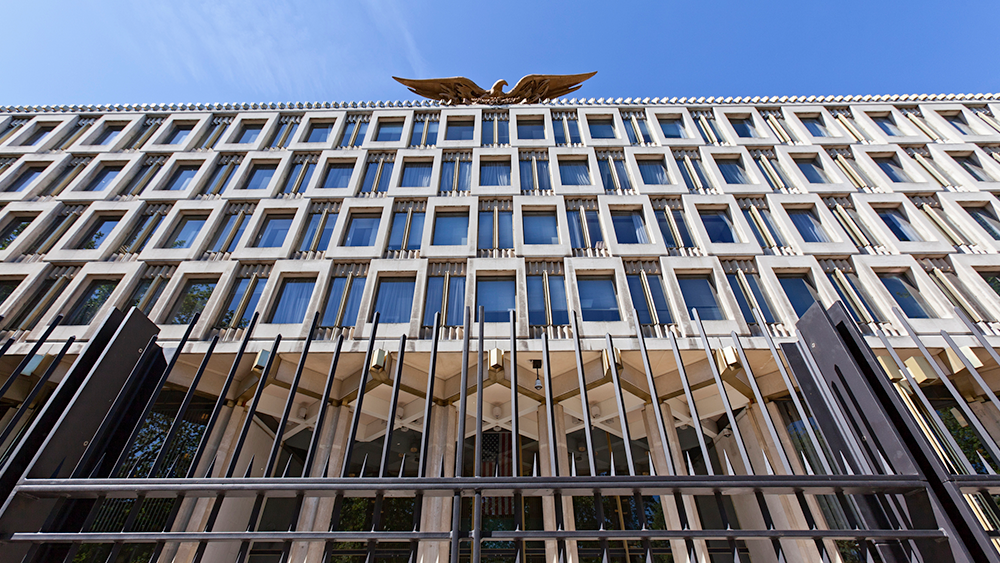
Above: The former US embassy in Grosvenor Square.
In 1960 the US mission moved into this purpose-built Embassy on the West side of the square. Built at a time when the USA had reached superpower status, it evoked a country showing its confidence overseas.
Designed by Finnish American architect Eero Saarinen, this monumental building combined ancient and modern forms. Like many buildings in London it’s clad in portland stone which, along with its proportions help it sit well with its neighbours, despite its size.
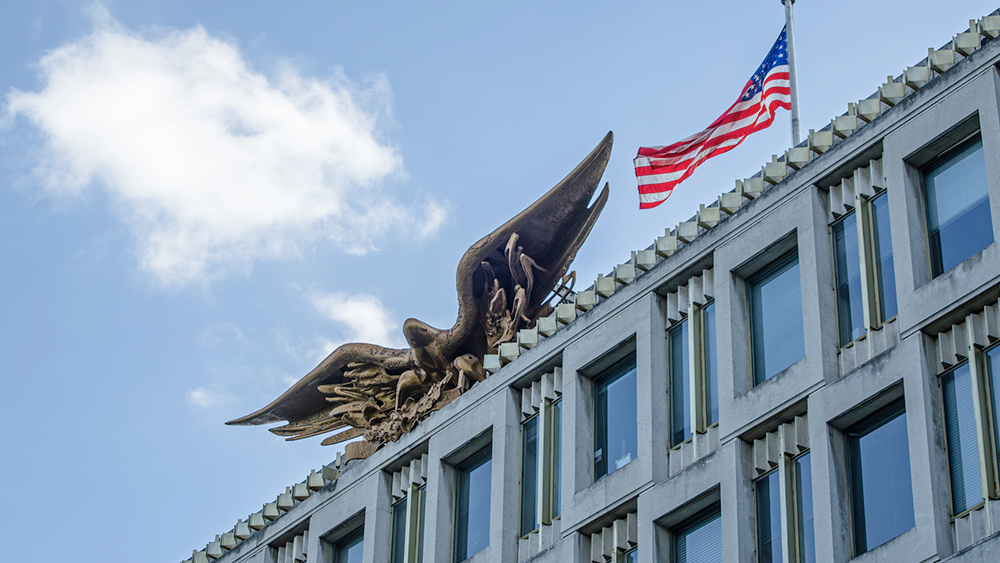
Above: The former US embassy had an elaborate design.
By the early noughties, the building was facing serious challenges. Post 9/11, security had become a major concern and not just for the embassy.
In 2006, Russian Countess Anca Vidaeff staged a three day hunger strike in protest of the threat she felt the embassy brought to the area while others took out a double page advert in newspapers against the building’s presence.
In 2007 a USD $15 million security upgrade created a ring of bollards around the site and closed the east side of the square to traffic. But as the needs of the embassy began to outgrow the building, the security threat, along with the regular protests outside the gates made it clear the embassy had to move.
And move it did; to Nine Elms, South London. For the uninitiated, South London has historically been seen as the less glamorous side of the city. Legend has it taxis would once refuse to cross the river after a certain time of night.
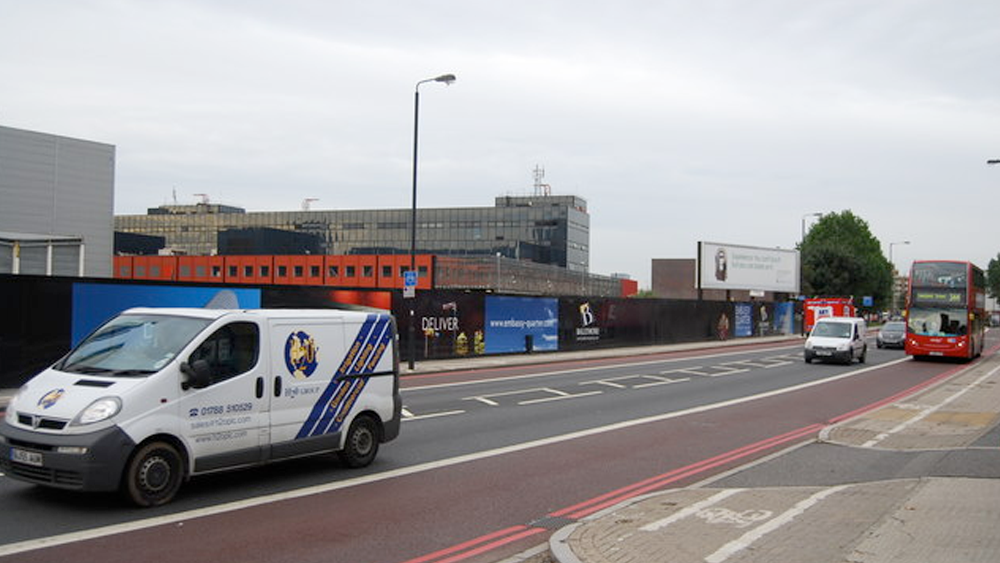
Above: Nine Elms pictured in 2010.
In reality, South London is no better or worse than north of the river, but in a business where appearances are everything, it was a bold move. At the time, Nine Elms was home to a wholesale market, sorting office, cement factory … and not much else.
The choice wasn’t completely out of left field. The embassy would spearhead a wider $48BN redevelopment of the surrounding area. But even today, despite a glut of luxury housing and a rather out of place sky pool, it lacks the prestige of Mayfair.
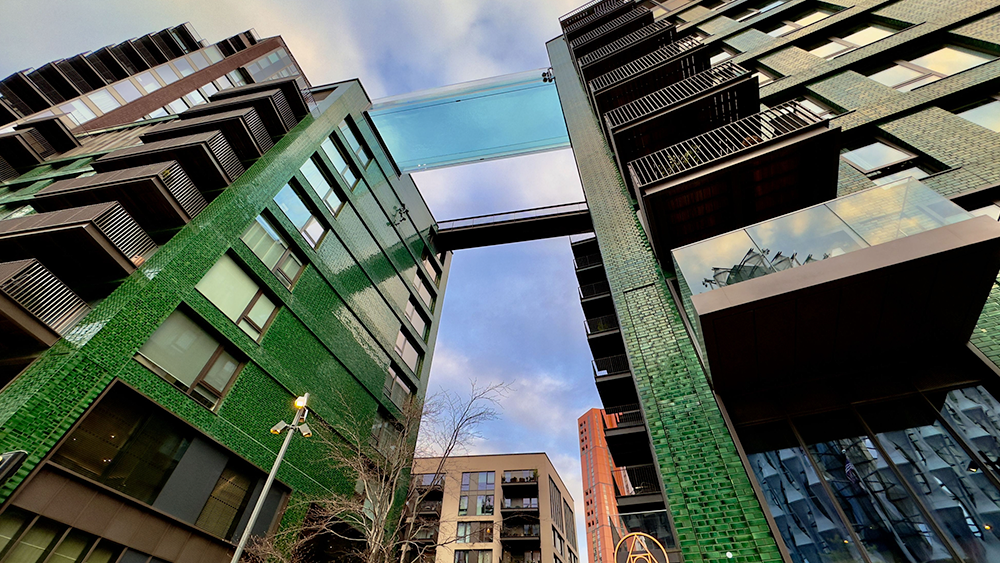
Above: The sky pool next to the new embassy.
The development was paid for by the sale of the old embassy and other real estate in London. Around USD $800M was reserved for the building itself.
Construction on the winning design began in 2013. The building is a huge cube perched on top of an artificial hill, a nod to motte and bailey style castles while also attempting to represent the rock solid nature of American democracy.
Elsewhere, the plan is a monumental effort to soften and hide the vast security features of this impregnable fortress. The building sits in the centre of a spiralling park featuring a mix of American and British trees.
It’s a deliberate nod to the English tradition of urban parks, while also providing the required 100 foot clear perimeter around the building to cushion the building from blasts and provide a clear line of sight.
As you walk around you notice there's no imposing perimeter fence. Instead, intruders are kept out through the constant use of sleight of hand. The northern edge of the site is protected from the busy road by a hedge concealing a row of anti vehicle bollards. If anything were to get through it would then career down this meadow before falling into the eight foot moat below.
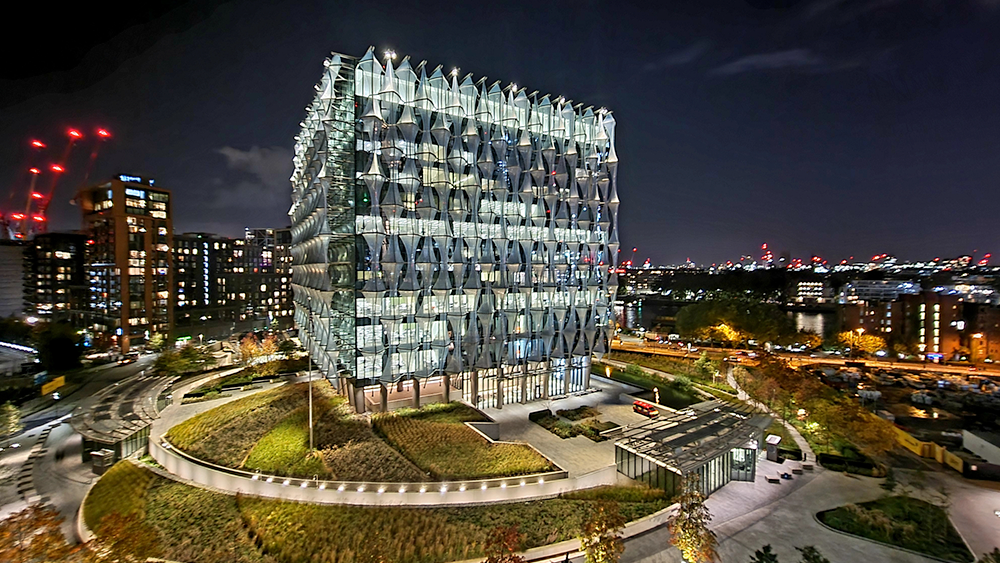
Above: The new embassy at night.
On the south side, the building is separated from the nearby plaza by a rising meadow. Concrete seating doubles up as a vehicle barrier while further up, another nod to traditional English gardens, the meadow grasses hide a trench. Also known as a ha-ha, these were built to keep livestock out without spoiling the view, now it does the same for people.
The building attracted criticism when it was opened in 2018. The comparison of the building with a castle was taken the wrong way by some. London’s other famous castle, the Tower of London was built by an invading army to intimidate the local population.
The extent of the security features, however well concealed, were seen by many as excessive, even in an age where elsewhere in the city heightened security is a fact of life. But as an embassy, it has to reflect America’s position in the world, both symbolically and practically.
From the building housing the new superpower, confidently stepping into the shoes of the old world powers, to the inconspicuous fortress, keen to play down its size and power. As far as embassies go, it definitely breaks the mould. Perhaps in the game of diplomacy that’s all that matters.
This video contains paid promotion for Masterworks. Skip the waitlist and invest in blue-chip art for the very first time by signing up here.
Additional footage and images courtesy of TRT World, Channel 4, CBS, The Walt Disney Company, Google Earth and HBO.
We welcome you sharing our content to inspire others, but please be nice and play by our rules.




